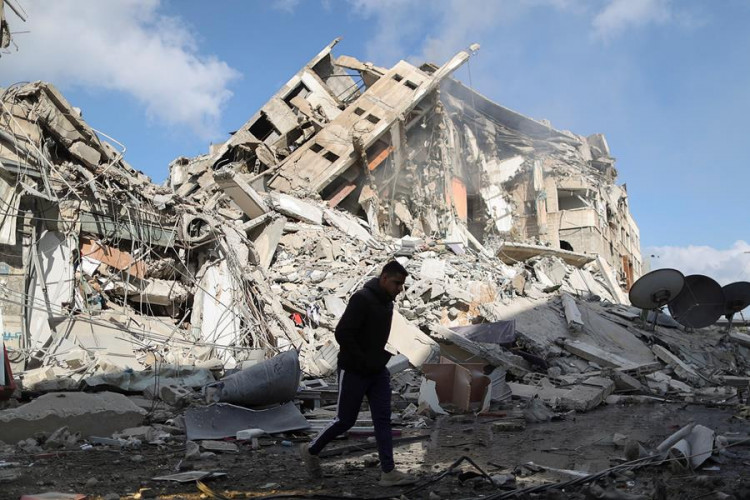The Israeli military has intensified its ground offensive in the Gaza Strip, particularly focusing on the southern region, while issuing evacuation orders to residents in areas now deemed as active battlefields. This directive has caused significant distress and displacement among the Gazan population.
The escalation comes after a week-long truce failed, with the Israeli military expanding its operations to dismantle Hamas, the ruling group in Gaza. The current conflict, triggered by an October 7th attack by Hamas into Israel, has led to one of the deadliest bouts of violence in recent history between the two parties.
A significant portion of Khan Younis, a key city in southern Gaza, was marked for immediate evacuation. Residents were instructed to move towards the Mediterranean coast and towards Rafah, near the Egyptian border. However, with many parts of the north already transformed into rubble due to earlier airstrikes, Gazans are finding themselves with dwindling safe places to seek refuge.
The Israeli military's chief Arabic-language spokesperson indicated that the central road out of Khan Younis to the north was now closed, functioning as a battlefield. Access was only permitted on the city's western outskirts. In Rafah, a temporary suspension of military activities was granted to facilitate access until early afternoon.
The human cost of the conflict has been devastating. In Rafah, an overnight bombing created a massive crater, leading to tragic casualties, including young children. Residents expressed their shock and grief, with many questioning the safety of the designated evacuation zones. Salah al-Arja, a local resident, lamented, "They tell you it is a safe area, but there is no safe area in all of the Gaza Strip."
Medical officials in Gaza have reported that the bombings have killed more than 15,500 people, with thousands more missing. The Israeli military maintains that their operations target Hamas operatives and blame civilian casualties on the militants' tactics of operating from civilian areas, including underground tunnels.
As Israel intensifies its campaign, concerns over humanitarian crises are mounting. The United Nations has indicated that the areas now under evacuation orders housed over 350,000 people before the war, not including the hundreds of thousands displaced from other regions.
The United States, Israel's closest ally, has called for more stringent measures to protect civilians, especially in the densely populated southern part of Gaza. Despite this, the Israeli military continues to pursue its objectives with what it describes as "maximum force."
In the backdrop of this escalation, international pressure is increasing for a return to the negotiating table. However, Israel seems determined to deliver a decisive blow to Hamas. As a result, the conflict has not only led to a staggering loss of life but also threatens to render large parts of Gaza uninhabitable.
The crisis is further complicated by the political dynamics, with the U.S. administration facing pressure to more assertively address the situation. However, the Biden administration's ability to influence the course of events remains to be seen.
In the meantime, the people of Gaza are left with few options as they navigate the perils of war and displacement, with the international community watching anxiously. The unfolding events in Gaza are a stark reminder of the complexities and human costs of prolonged conflict in the region.






